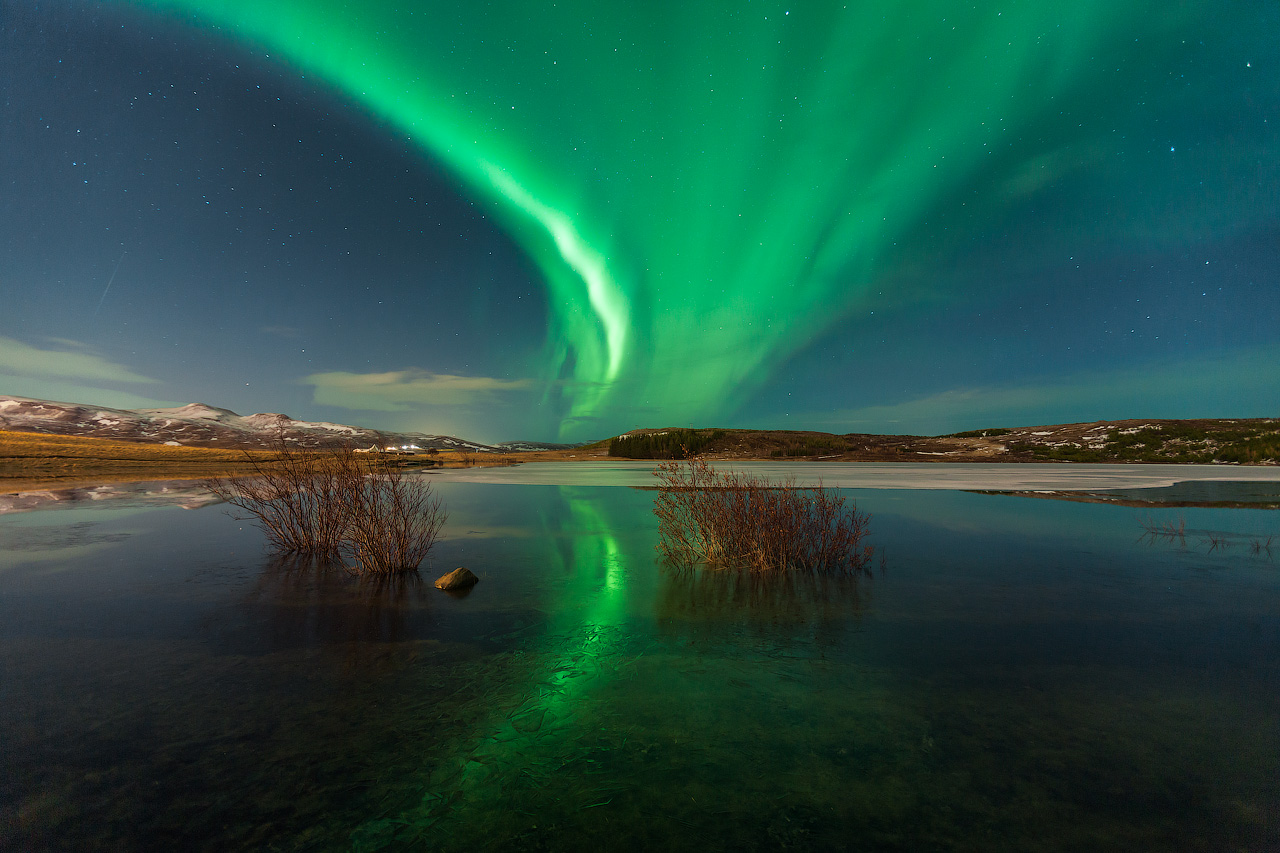

The best time to see them is during the dark autumn and winter period when the days are short, usually from early September to the end of April. In Iceland, the Northern Lights are visible for approximately eight months a year. See also: 9 Best Places for Landscape Photography in Iceland.Keep in mind though, that even if you are a few degrees outside of the Arctic Circle, you still still be able to see the Northern Lights - they will just appear to be further away, like a faint glow at the edge of the skyline. This is due to the low level of atmospheric interference, meaning that it will appear to be clearer and brighter, making it all the more photogenic. When the Aurora is overhead, it tends to be infinitely more stunning than when it is on the horizon. The Aurora will appear to be directly overhead, even if it is only weak. If you are able to get yourself to Iceland or another location within the Arctic Circle, then you will be in for a treat. The Golden Circle in Iceland is one of the best places to see the Northern Lights. Its unique environment, coupled with the Aurora, gives rise to a diverse range of options for photographers seeking to capture both original and extraordinary compositions. Iceland is situated at 66 degrees north, which makes it one of the few perfect places in the world where you can see and photograph this rather rare occurrence. Solar winds tend to be focused most intensely by the Earth’s magnetic field around the poles, therefore the best place to see the Northern Lights is within the Arctic Circle at a far-northern latitude between 60 to 74 degrees. Where to See the Northern Lights in Iceland? See also: 4 Day Northern Lights & Ice Cave Photo Tour.

On the other hand, a strong solar wind will result in the Aurora swirling or dancing, even racing in columns fervently throughout the night sky. Photo by: 'Iurie Belegurschi'.Īlthough the Earth’s magnetic field deflects solar winds away from the atmosphere, the strength of the solar wind itself will affect the kind of Aurora that we see.Ī weak solar wind means that the Aurora will be less prominent and not vary much in definition or colour. The Northern Lights are a complex atmospheric phenomenon. If the collision is with oxygen, then the result is green and yellow hues, whereas contact with nitrogen results in reds, violets and blues. The colours of these lights depend on what type of gases the discharged particles collide with. When a ‘solar wind’ of particles emanates from the sun and penetrates this shield, it combines with atoms and molecules in the Earth’s atmosphere, creating colourful lights that can seemingly move across the sky. The Aurora may seem ethereal but there is actually a very scientific explanation behind its occurrence.īasically, the Earth is surrounded by a magnetic field. See also: 8 Day Northern Lights & Ice Cave Winter Photo Workshop in Iceland.
#Northern lights iceland how to#
In this complete guide to photographing the Aurora in Iceland, we will help you to get equipped with everything you need to know about how to capture this elusive phenomenon before you even begin the chase, including the best time to see it, how to read the Aurora forecast, as well as what to wear, photographic equipment to bring and the best camera settings to use in order to produce your own breathtaking Aurora photographs. If you have travelled all the way to Iceland for the opportunity to photograph the Aurora, then the last thing you’ll want is to be awe-struck and completely unprepared when it emerges, fumbling needlessly in the dark as it dissipates and vanishes before your very eyes.

There is nothing quite as enigmatic as the slow-dance of the Aurora Borealis (more commonly known as the ‘Northern Lights’), quietly undulating across the night sky.


 0 kommentar(er)
0 kommentar(er)
